Sigma C 50 mm f/2 DG DN
3. Build quality
In the photo below the tested lens is positioned between the Voigtlander Apo Lanthar 2/50 and the reflex camera Sigma A 35 mm f/1.4 DG HSM. Still, it should be emphasized that the Voigtlander, presented in this photo, is in its folded position; if you set the focus at its minimum focusing distance its length increases distinctly.
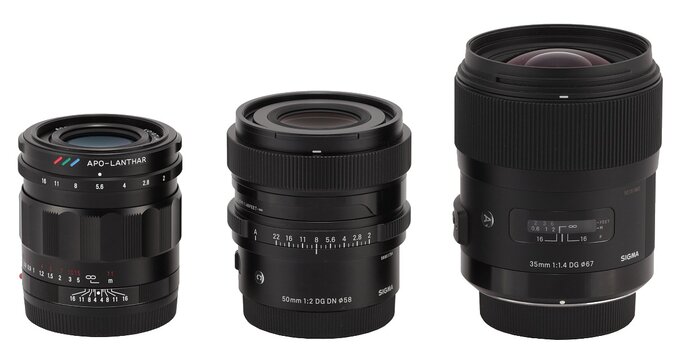 |
Please Support UsIf you enjoy our reviews and articles, and you want us to continue our work please, support our website by donating through PayPal. The funds are going to be used for paying our editorial team, renting servers, and equipping our testing studio; only that way we will be able to continue providing you interesting content for free. |
- - - - - - - - - - - - - - - - - - - - - - - - - - - - - - - - - - - - - - - - - - - - - - - -
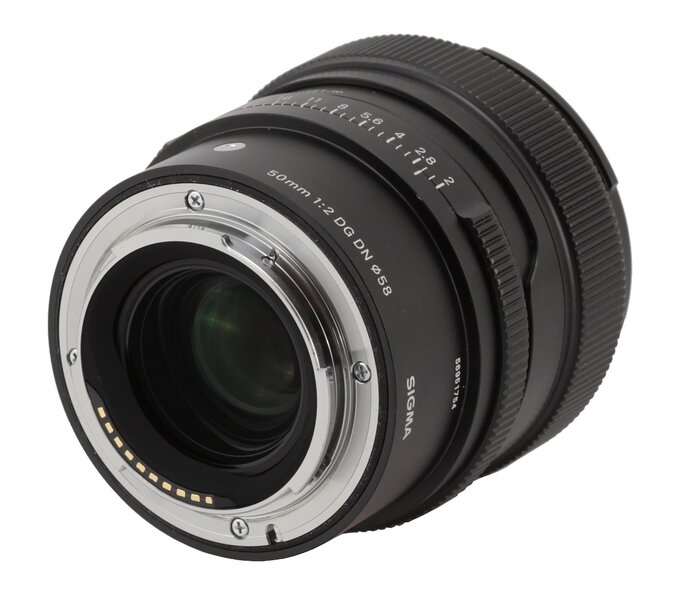 |
Another ring, 10 mm wide, controls aperture. On both sides of the ring you can find some convex ribbing, added for a firmer grip and better ergonomics. The ring has aperture marks from f/2.0 to f/22, with intermediate points every 1/3 EV, and also an A value that allows you automatic control of parameters from the camera menu. Its performance is beyond reproach.
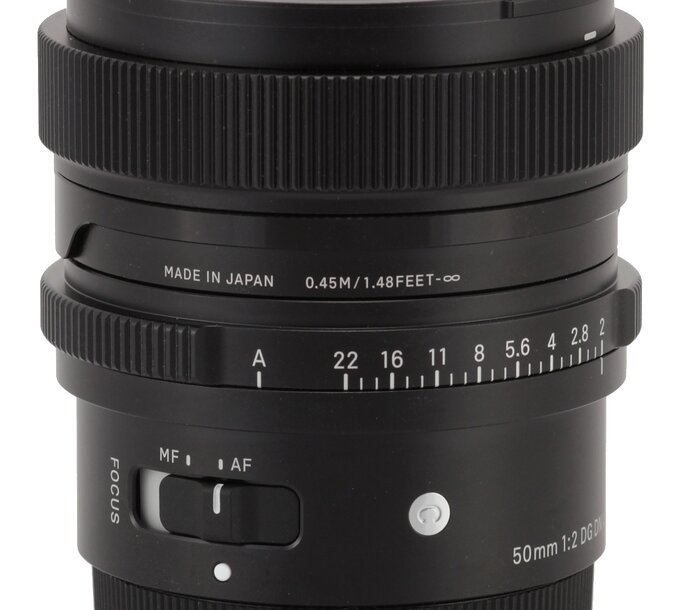 |
Another ring, 16 mm wide, controls manual focus. It comes without any markings and its main part is covered by ribbing that makes your grip more firm. The ring is a focus-by-wire construction and it moves quite smoothly. Even if you turn it faster running through the whole distance range takes an angle of about 180 deg. It's a high value, allowing you very precise settings.
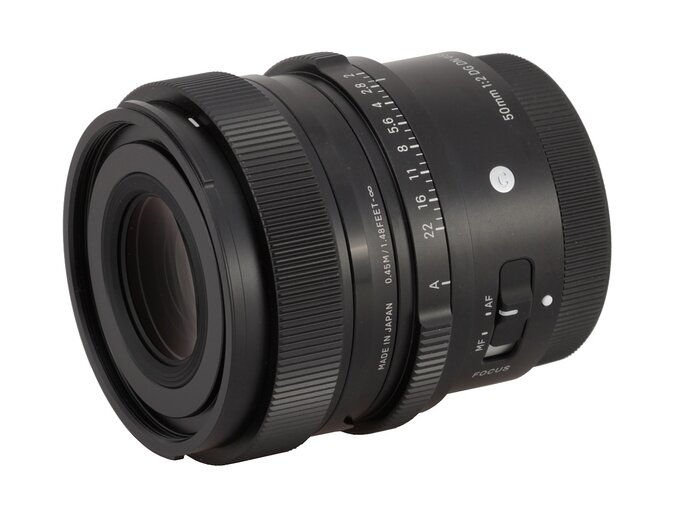 |
The front element, 29 mm in diameter, doesn't move. It is surrounded by a piece of black barrel without any inscriptions.
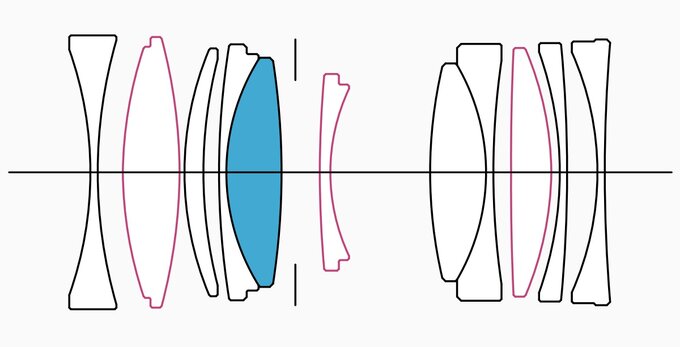 |
Buyers get in the box with the lens: a metal hood, a rear cap and two front caps – one classic, made of plastics, the other magnetic and made of metal, a really cool solution. Series C accessory kits don't include any kind of case.
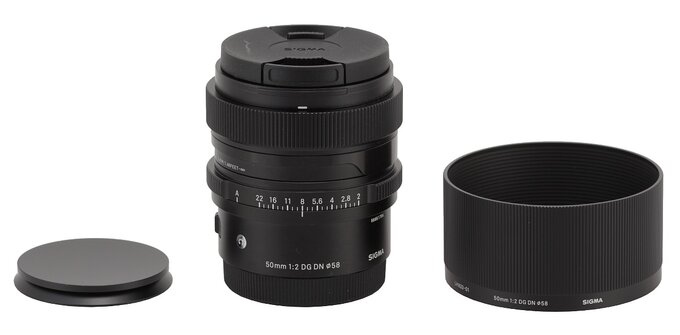 |






